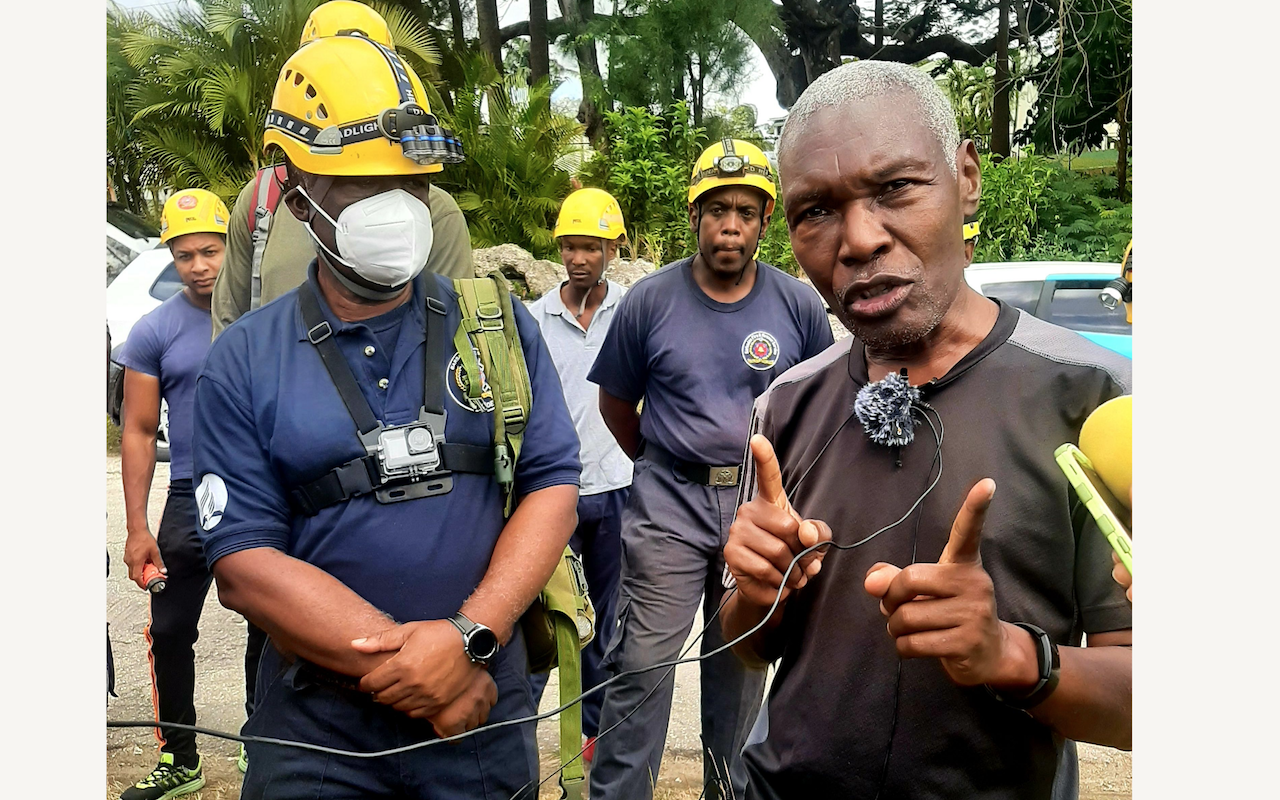The Barbados Fire Service (BFS) has embarked on a series of familiarisation and training exercises as it seeks to ensure fire officers are fully prepared to safely execute cave rescues when necessary.
Noting that hikers and adventure seekers explore caves and gullies across the island almost daily, Chief Fire Officer Errol Maynard said it was necessary for BFS members to become familiar with those spaces.
“We recognised that over the last couple of months persons are in these caves, but we as a department really don’t know the terrain and the outlay of these caves. If something happens we have to be the ones to go and rescue them, so we believe it is timely that we get familiar with these caves to ensure that if something happens, we don’t have to take an additional civilian in there to guide us but we will already have an idea of what the caves look like, and also these gullies,” he said ahead of the first familiarisation tour at Coles Cave in Walkes Spring, St Thomas on Thursday.
“It is important that we are proactive because at the end of the day we don’t only want to save the life, we want that your quality of life after the rescue is just as good as it was before or even better.”
Eighteen members of the BFS drawn from all fire stations across the island, accompanied by ardent cave explorer and hiker Dr John Mwansa who is also Technical Advisor to the Barbados Water Authority (BWA), participated in the first of what will be weekly Thursday cave expeditions.
Just under a month ago, 17-year-old Sheadon Padmore was rescued from that location by members of the BFS.
That near five-hour rescue mission which lasted up to midnight on February 27 was the first in about two decades. It was led by the fire chief, three station officers and 12 other personnel who encountered high water levels in the cave.
Padmore, who had gone on a tour of the cave with friends earlier in the day, said he had explored it at least ten times prior to that incident.
There are about 10 documented caves in Barbados – some of which are very small and unable to accommodate people – but it is believed there are several others that have not yet been discovered.
Maynard advised persons going into caves to inform relatives or friends beforehand, and to go with an experienced cave explorer.
Mwansa, who is familiar with Coles Cave which leads to an area from which the BWA sourced water several years ago, also had some advice for cave explorers.
“One of the things you should always do in planning a cave hike is check the weather. When it’s going to rain, you don’t normally want to go into a cave because you could get storm surge coming through there to a point where you could get submerged or isolated and can’t get out of the cave,” he cautioned.
He also warned of the dangers of noxious gases in caves due to bat droppings and other decaying organic matter.
Mwansa added: “Most cavers, especially if they are exploring for the first time, use a rope so when they go along, there is a rope tied to the beginning and they can use it to come back.” (MM)




